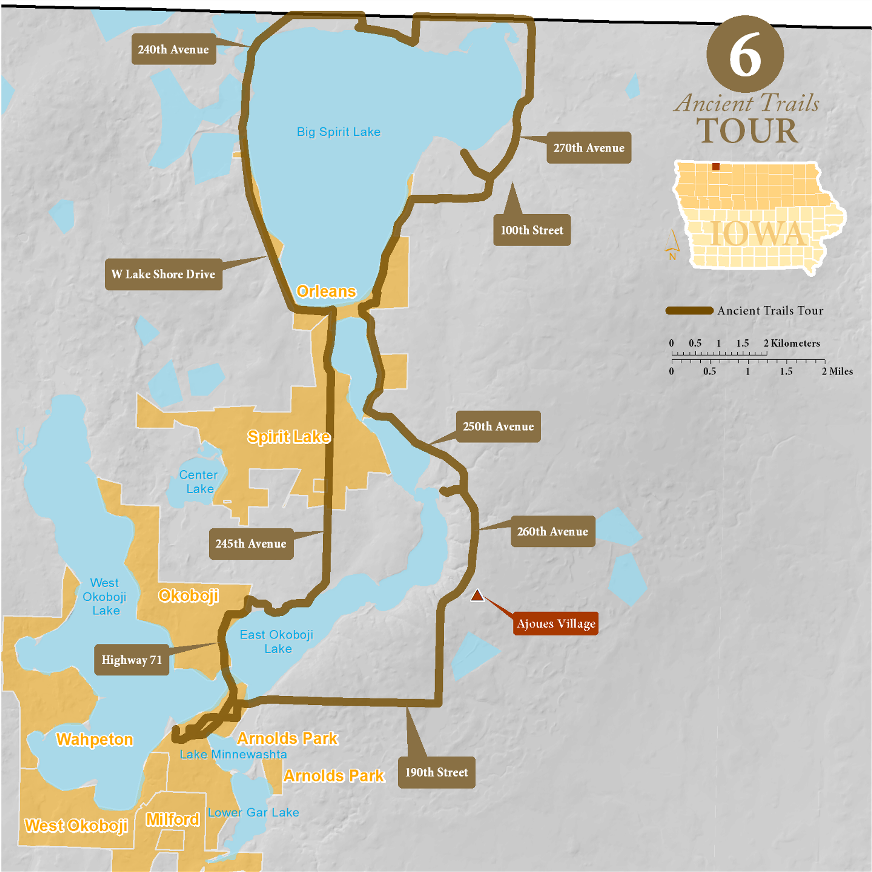
Spirit Lake Loop Tour
Spirit Lake was the name given by early explorers to the cluster of lakes in Dickinson County. The source of the name is often stated as “Minne Waukon,” roughly translated as “Great Spirit,” which is derived from one of the Dakotan languages. In the early 1700s several Ioway and Otoe villages were depicted along one of the lakes, possibly East Lake Okoboji.
Big Spirit Lake Loop (13 miles)
A drive around Spirit Lake can give you a sense of the size of the lake, and why it was so important to Indians. However, almost every inch of waterfront is covered by vacation cottages and house lots, so it barely resembles the ancient lake. One exception is Hales Slough Wildlife Management Area, where you can access a stretch of undeveloped lakefront. Here you can consider the lake as it may have appeared. Archaeologically the lakeshore has not been surveyed, so the exact location of Indian villages is unknown. On the opposite shore of the lake there was a large Indian mound group which was probably used by Ioway Indians. In 1916 workers digging a reservoir uncovered burials interred with trade goods and a horse.
East Lake Okoboji Loop (16 miles)
East Lake Okoboji is surrounded by even more vacation homes, but its east shore likely contained Ioway and Otoe villages 250 years ago. Elinor Bedell State Park can give you a glimpse of the lake before it was developed, and it is close to the likely areas the Ioway and Otoe villages of the 1700s. Hike the trails and experience the prairies, wetlands, and oak savanna landscapes of the past. A short detour to the Abbie Gardner Sharp Cabin in Arnolds Park, where a settler family suffered an Indian attack in 1857, can give insight into the tension between Indians and settlers.
Place to Visit
Abbie Gardner Cabin
A band of Santee Dakota, angered by incursions into their territory, attacked a settler family living in a cabin on the Iowa frontier during a severe winter in 1857. In what became known as the Spirit Lake Massacre, a young Abbie Gardner was taken captive and was returned a few months later for a ransom. In 1885, she published her memiors in the History of the Spirit Lake Massacre and Captivity of Miss Abbie Gardner. Currently, the state maintains the park and her home site.
